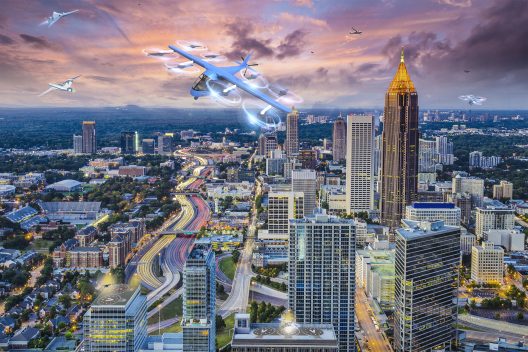Two Videos to Ponder
We’re not there yet, in the land of flying cars and even motorcycles. But we do have some pretty good images of where we are and where we might be headed. CNBC produced some pretty thoughtful and well-researched pieces on a major problem plaguing all of us who live within bumper distance of one another – and some plausible solutions. Both videos touch on urban air mobility.
How Much Do Traffic Jams Cost the U. S. Economy?
Gridlock, traffic jams and delay – they all frustrate us daily if we live in a big city. They take away from family time, pollute the air, and drive us to distraction. This video ends with an optimistic take on the benefits sky taxis might bring to groundlings everywhere. We could use cleaner skies, more time at home, and more Zen-like minds. You might learn how to handle the challenges of heavy traffic, too.
Why Don’t We Have Electric Airplanes Yet?
Since Hanna and Barbera showed a modern family flitting about in a flying car, and James Bond went bounding about with a jet pack five decades ago, we may well wonder why real life hasn’t been able to emulate the fantasies of our youth. This video gives a few insights into that question and shares some optimistic possibilities for the future.
What to Do? The NASA ARMD* Urban Air Mobility Grand Challenge
The Challenge, taking several years starting in 2020, will involve testing different approaches to producing a realistic, reliable, functional set of advanced urban air mobility systems. This will require individual and collaborative efforts leading to the Grand Challenge, “a full field demonstration in an urban environment that tests the readiness of companies’ vehicles and airspace operators’ systems to operate during a full range of passenger transport and cargo delivery scenarios under a variety of weather and traffic conditions.”
According to NASA, “Its objectives are to:
• Accelerate technology certification and approval.
• Develop flight procedure guidelines.
• Evaluate communication, navigation and surveillance options.
• Demonstrate an airspace system architecture based on NASA’s Unmanned aircraft systems Traffic Management (UTM) construct.
• Collect initial assessments of passenger and community perspectives on vehicle ground noise, cabin noise and on-board ride quality.
We can start 2020 with an optimistic view that progress in electric flight may very well accelerate to new levels in the new year.
*Aeronautics Research Mission Directorate


